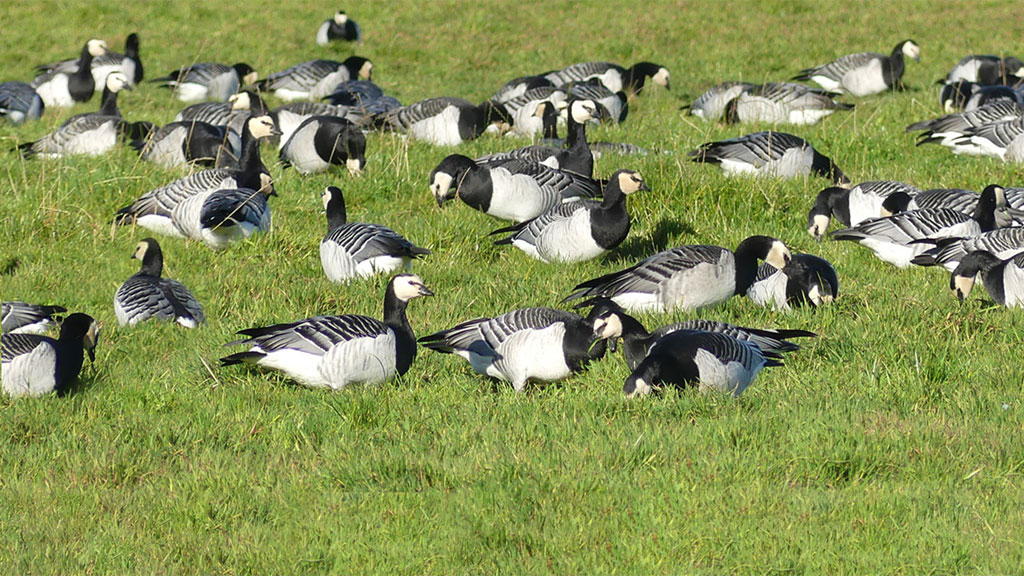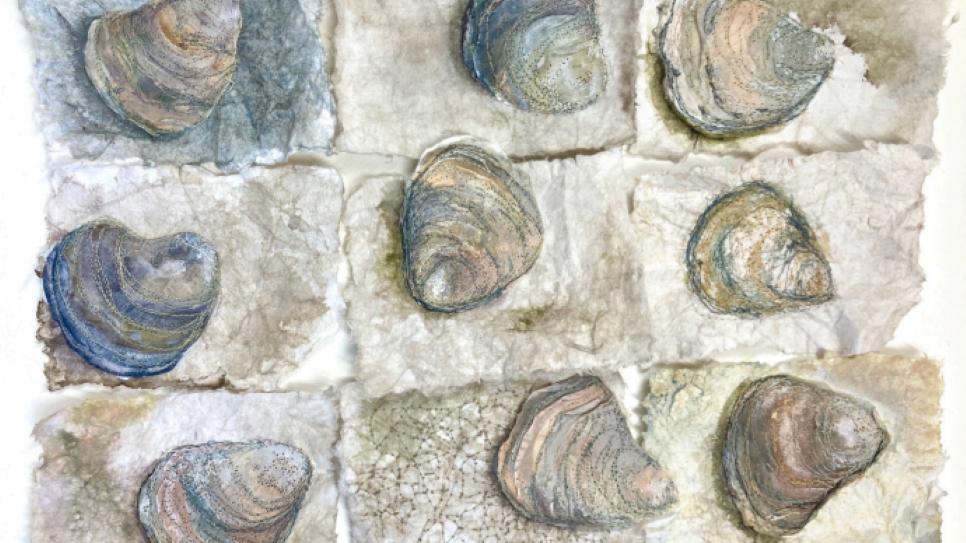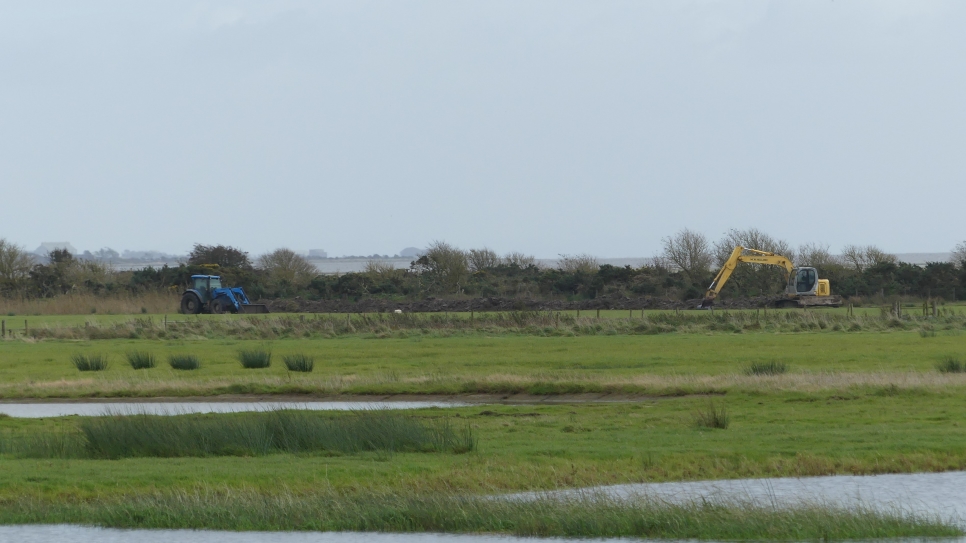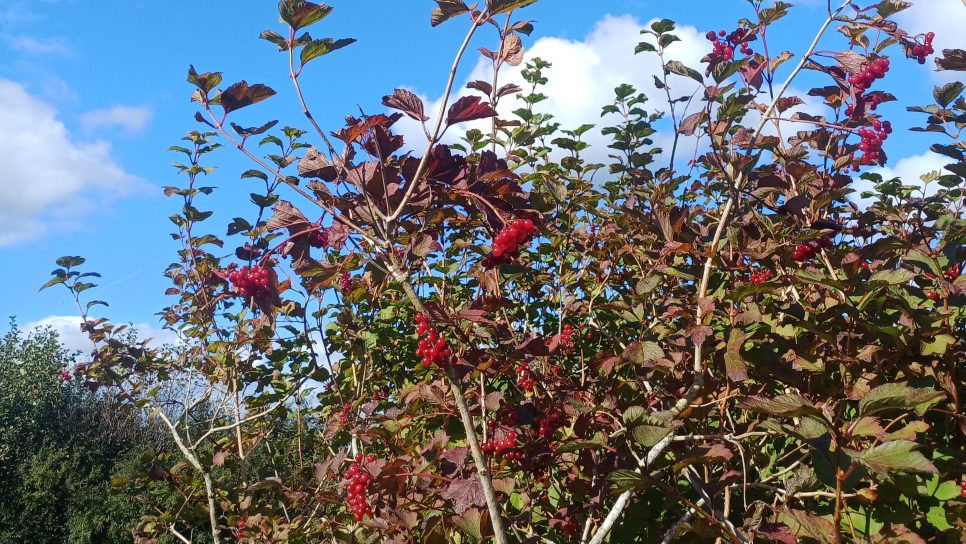Fungi and why you should leave dead wood in your garden

It’s amazing what can be spotted hidden amongst the fallen leaves, perfectly camouflaged and easily unnoticed.
The fruiting bodies of a fascinating and valuable organism: fungi. They play a crucial role in our ecosystem, breaking down organic matter and cycling nutrients. Many fungi create networks underground, providing a connection between flora where the passage of nutrients and water takes place. It is incredible to think that this can be constantly happening beneath our feet, an unseen symbiosis of plants and fungi helping each other survive and thrive.
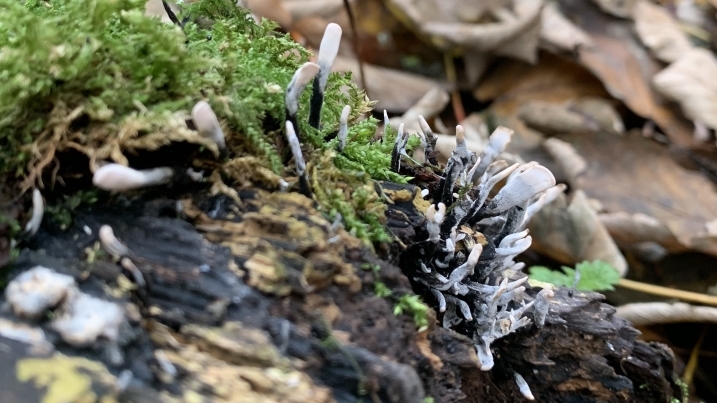 Candlesnuff fungi on a mossy log
Candlesnuff fungi on a mossy log
Decay fungi can be seen across the reserve, in areas where we have left deadwood to encourage fungal growth and invertebrate activity. The fungi breakdown the wood, allowing for nutrients to be returned to the soil. These deadwood piles are easy to establish: any wood that hasn’t been treated can be piled up and left for the microorganisms and invertebrates to enjoy.
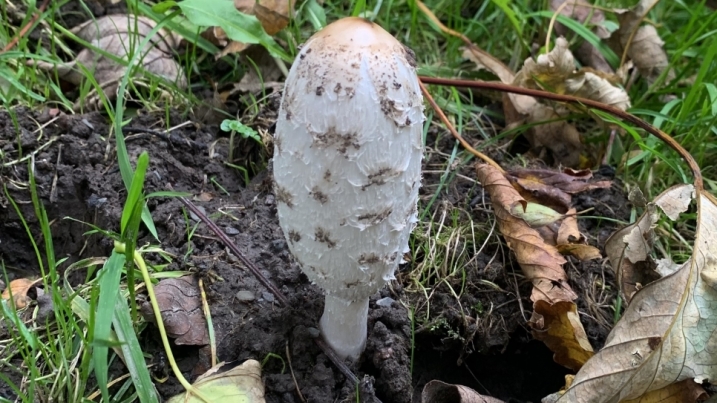 Shaggy inkcap fungi emerging from earth surrounded by dry leaves
Shaggy inkcap fungi emerging from earth surrounded by dry leaves
Another fascinating organism that is widespread across the reserve is lichen. Lichen are established from a symbiotic relationship between one or multiple fungi and an algae or cyanobacteria. It is thought that presence of particular lichen species can give an indication of air quality so it is a good sign that we have quite a range of lichen here at Caerlaverock!
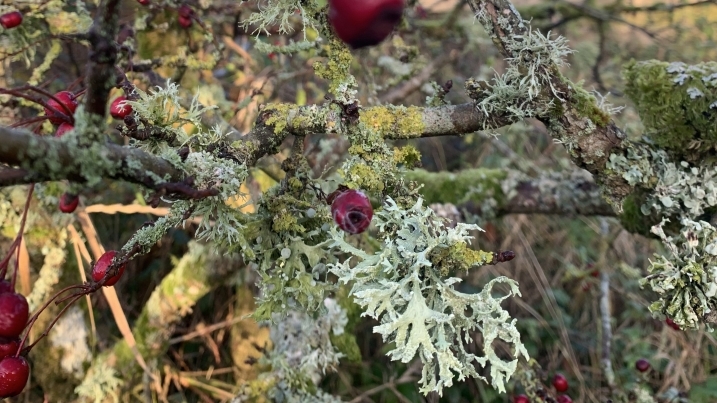 Oakmoss lichen on a hawthorn bush
Oakmoss lichen on a hawthorn bush
Despite these organisms being small in size, they hold a lot of value and so keeping them protected and encouraging their survival is highly important.
Words and pictures by Meg Grisewood-Foley
Feature image of blushing bracket fungi on a mossy log
